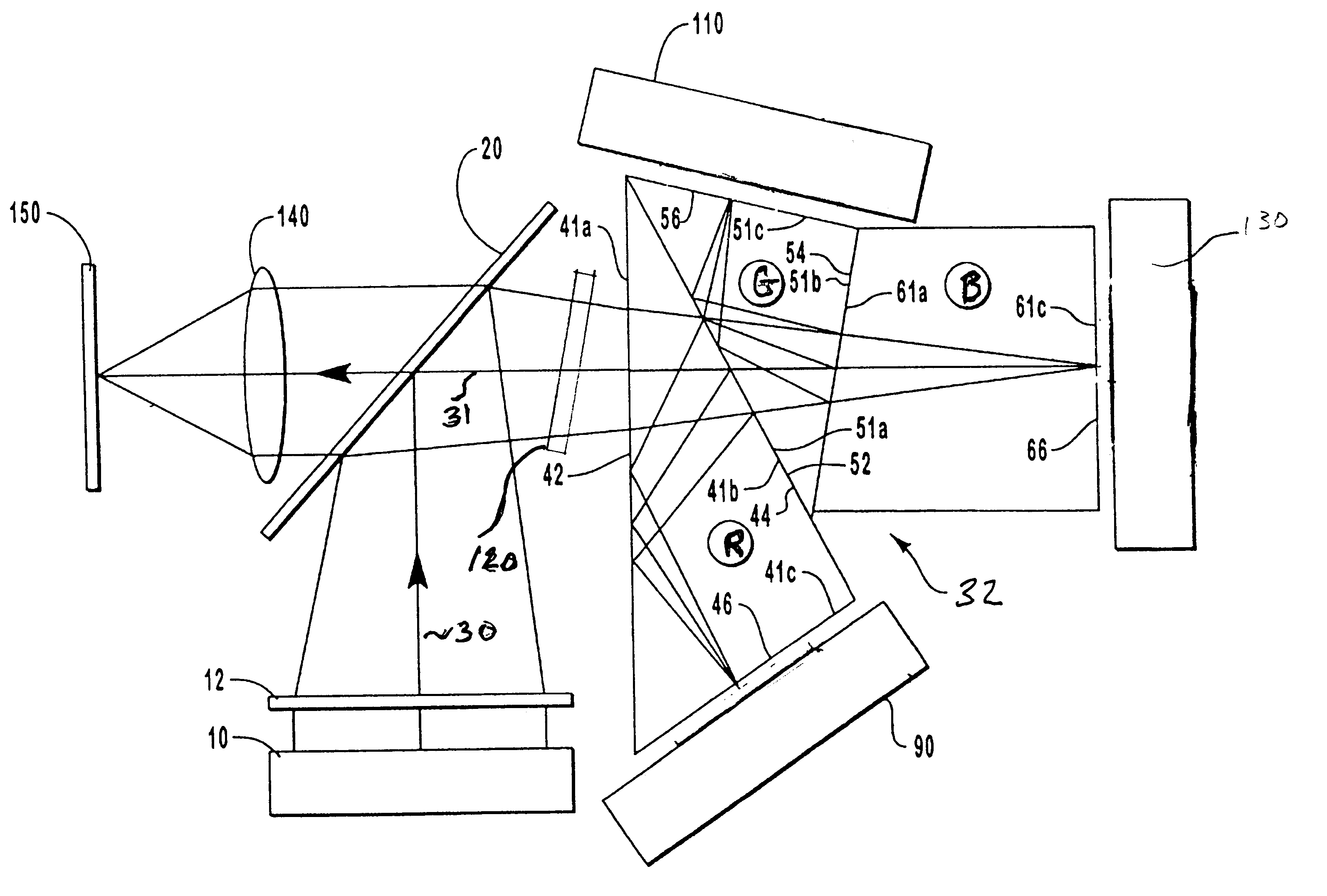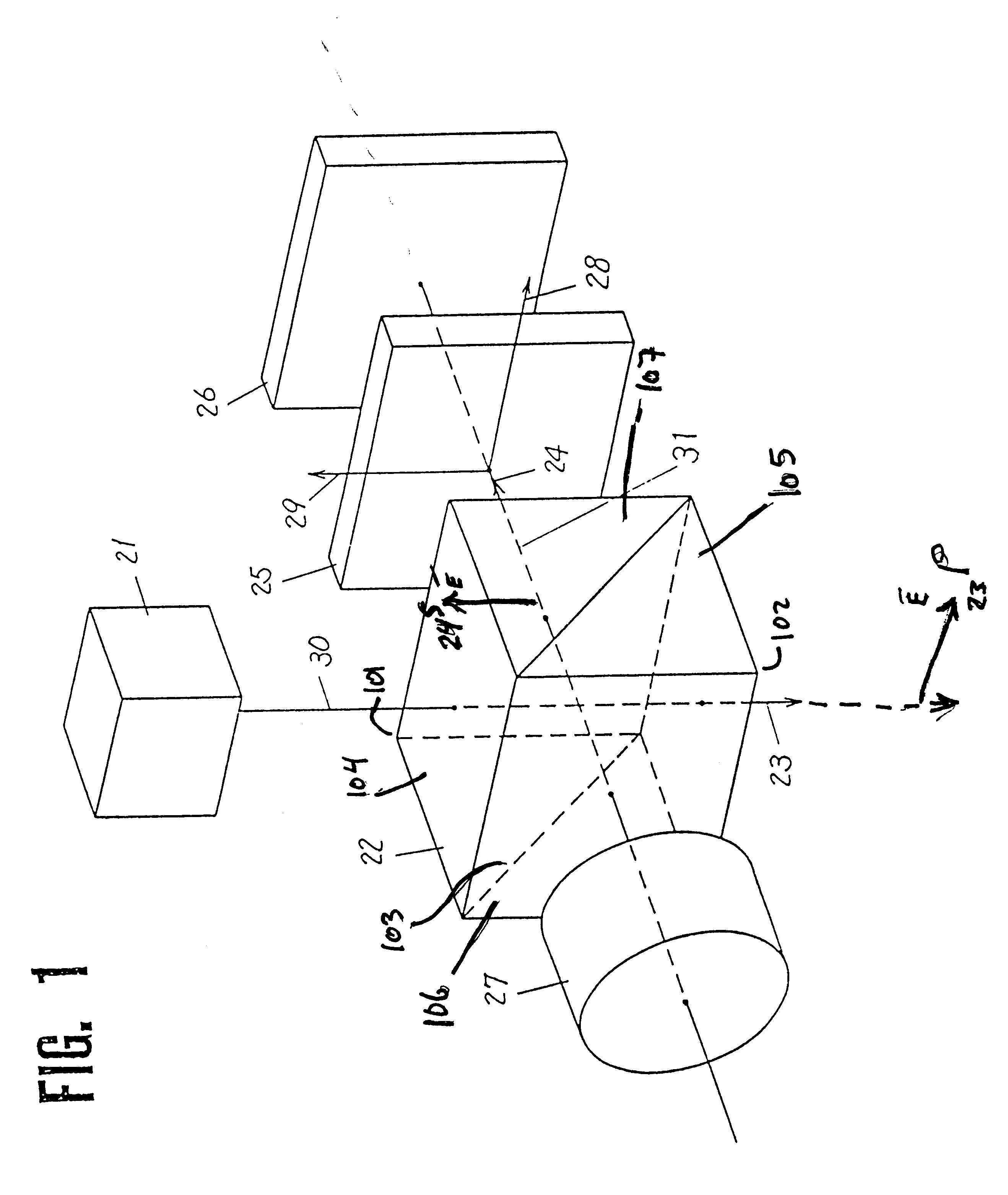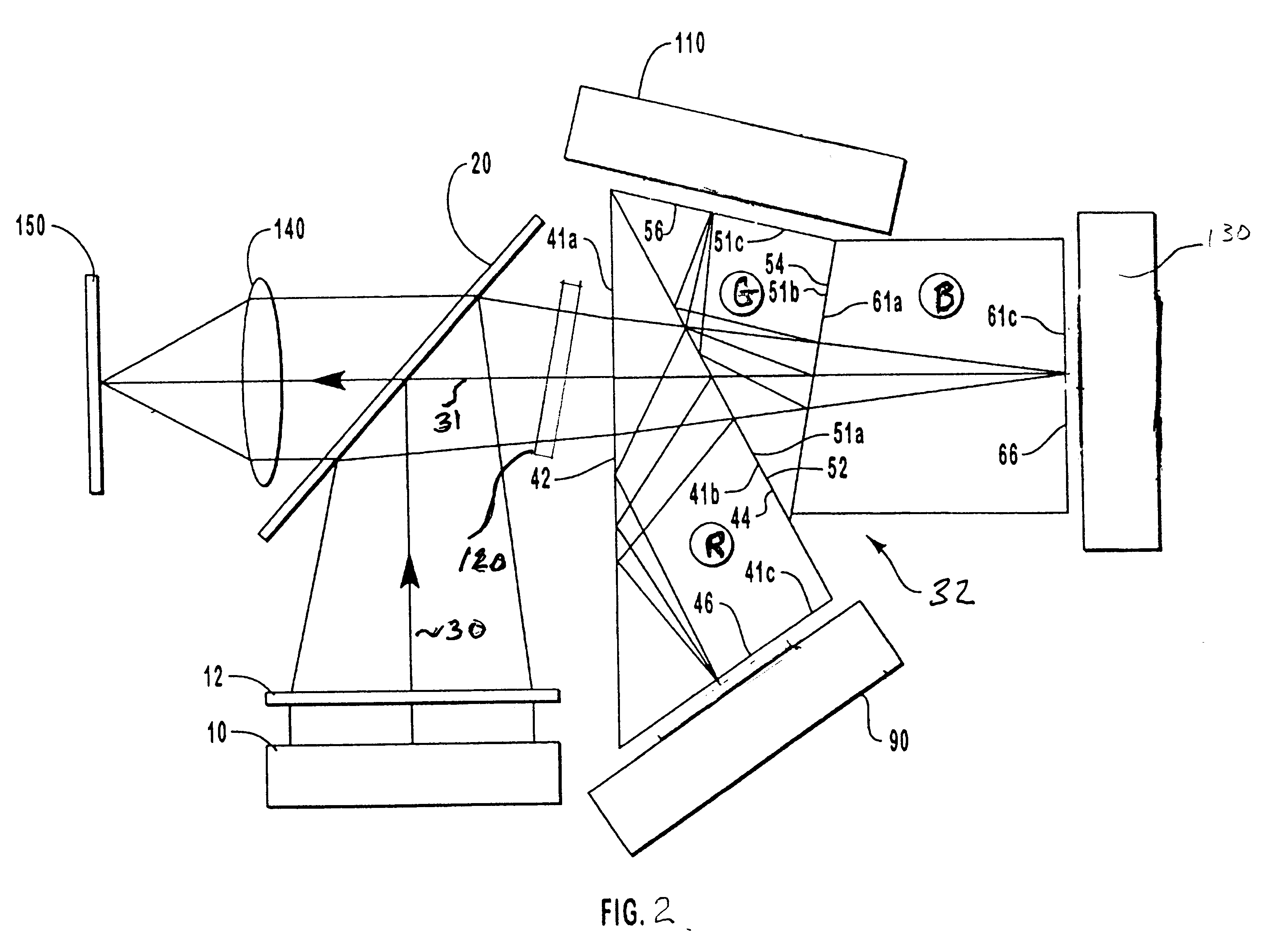Method of using a retarder plate to improve contrast in a reflective imaging system
- Summary
- Abstract
- Description
- Claims
- Application Information
AI Technical Summary
Benefits of technology
Problems solved by technology
Method used
Image
Examples
Embodiment Construction
This example of a preferred embodiment illustrates the construction of the prism corresponding to the green color channel as illustrated in FIG. 5. The waveplate retarder 120 has a retardance of 80 nm and is laminated to a glass plate 140, the glass plate having a thickness of 3 mm. The resulting waveplate and glass laminate is in turn attached or bonded directly onto prism G , thereby fixing the waveplate retarder 120 between the glass plate 140 and prism G. This assembly configuration and method fixes the angle of incidence of the second optical axis with respect to waveplate retarder 120 at about 10 degrees. Waveplate retarder 120 is effectively embedded within the color separation device, such as philips prism 32 in FIG. 4 which comprises prisms G, R and B. The thickness of prism G in the direction of the second optical axis is adjusted to accommodate the thickness of the waveplate, glass plate and any optical adhesive 160; the optical adhesive being utilized at one or more of t...
PUM
 Login to View More
Login to View More Abstract
Description
Claims
Application Information
 Login to View More
Login to View More - R&D
- Intellectual Property
- Life Sciences
- Materials
- Tech Scout
- Unparalleled Data Quality
- Higher Quality Content
- 60% Fewer Hallucinations
Browse by: Latest US Patents, China's latest patents, Technical Efficacy Thesaurus, Application Domain, Technology Topic, Popular Technical Reports.
© 2025 PatSnap. All rights reserved.Legal|Privacy policy|Modern Slavery Act Transparency Statement|Sitemap|About US| Contact US: help@patsnap.com



